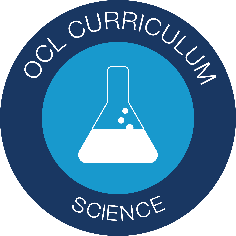
3.1 Physical Chemistry
Quiz
•
Chemistry
•
9th - 12th Grade
•
Practice Problem
•
Hard
+13
Standards-aligned

Stanton Wertjes
Used 108+ times
FREE Resource
Enhance your content in a minute
353 questions
Show all answers
1.
MULTIPLE CHOICE QUESTION
30 sec • 1 pt

In the early twentieth century the apparatus shown in the diagram was used to investigate atomic structure. When He2+ particles were fired at a thin sheet of gold, most of the particles were detected at point P. What conclusion can be drawn from the detection of He2+ particles at point P?
Gold atoms contain electrons.
Gold atoms contain protons.
Gold atoms contain neutrons.
Gold atoms are mainly empty space.
Tags
NGSS.HS-PS1-8
2.
MULTIPLE CHOICE QUESTION
30 sec • 1 pt

When He2+ particles were fired at a thin sheet of gold, about 1 in 8000 of the particles were detected at point Q. What conclusion can be drawn from the detection of He2+ particles at point Q?
Gold atoms have a small, positive nucleus.
Gold atoms have electrons in orbitals.
Gold consists of ions in a sea of delocalised electrons.
Gold atoms have more protons than He2+ particles.
Tags
NGSS.HS-PS1-3
3.
MULTIPLE CHOICE QUESTION
30 sec • 1 pt
Which of these correctly shows the numbers of sub-atomic particles in a 41K+ ion?
Number of electrons: 19, Number of protons: 19, Number of neutrons: 20
Number of electrons: 18, Number of protons: 20, Number of neutrons: 21
Number of electrons: 18, Number of protons: 19, Number of neutrons: 22
Number of electrons: 19, Number of protons: 18, Number of neutrons: 23
4.
MULTIPLE CHOICE QUESTION
30 sec • 1 pt
Which of these correctly shows the numbers of sub-atomic particles in a 21Na+ ion?
Number of electrons: 11, Number of protons: 11, Number of neutrons: 10
Number of electrons: 10, Number of protons: 12, Number of neutrons: 9
Number of electrons: 10, Number of protons: 11, Number of neutrons: 10
Number of electrons: 11, Number of protons: 10, Number of neutrons: 11
5.
MULTIPLE CHOICE QUESTION
30 sec • 1 pt
Which of these correctly shows the numbers of sub-atomic particles in a 42Ca2+ ion?
Number of electrons: 20, Number of protons: 20, Number of neutrons: 22
Number of electrons: 18, Number of protons: 21, Number of neutrons: 21
Number of electrons: 18, Number of protons: 20, Number of neutrons: 22
Number of electrons: 20, Number of protons: 19, Number of neutrons: 23
Tags
NGSS.HS-PS1-7
6.
MULTIPLE CHOICE QUESTION
30 sec • 1 pt
Which species has the same number of electrons as the radical •CH3?
CH2
CH3+
CH3−
CH4+
7.
MULTIPLE CHOICE QUESTION
30 sec • 1 pt
What are the numbers of neutrons and electrons in the 57Fe2+ ion?
Neutrons: 31, Electrons: 24
Neutrons: 57, Electrons: 24
Neutrons: 31, Electrons: 26
Neutrons: 57, Electrons: 28
Create a free account and access millions of resources
Create resources
Host any resource
Get auto-graded reports

Continue with Google

Continue with Email

Continue with Classlink

Continue with Clever
or continue with

Microsoft
%20(1).png)
Apple
Others
Already have an account?
Popular Resources on Wayground

5 questions
This is not a...winter edition (Drawing game)
Quiz
•
1st - 5th Grade

25 questions
Multiplication Facts
Quiz
•
5th Grade

10 questions
Identify Iconic Christmas Movie Scenes
Interactive video
•
6th - 10th Grade

20 questions
Christmas Trivia
Quiz
•
6th - 8th Grade

18 questions
Kids Christmas Trivia
Quiz
•
KG - 5th Grade

11 questions
How well do you know your Christmas Characters?
Lesson
•
3rd Grade

14 questions
Christmas Trivia
Quiz
•
5th Grade

20 questions
How the Grinch Stole Christmas
Quiz
•
5th Grade
Discover more resources for Chemistry

20 questions
Ionic Compound Nomenclature
Quiz
•
9th - 12th Grade

30 questions
ERHS Chem - Chapter 6 Covalent Compounds
Quiz
•
11th Grade

42 questions
Chemistry Final Exam Review
Quiz
•
9th - 12th Grade

43 questions
Electron Configuration and Orbital Notation
Quiz
•
10th Grade

35 questions
Chemistry Semester A Final Review
Quiz
•
11th Grade
